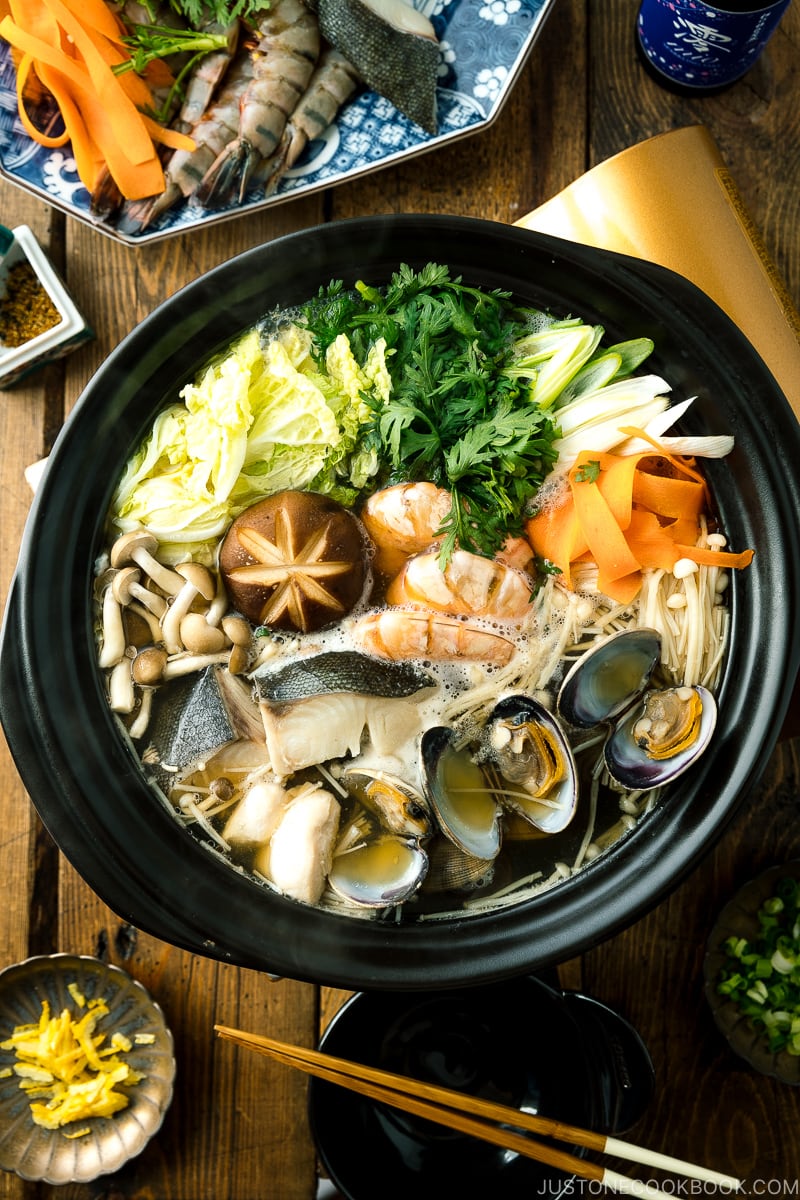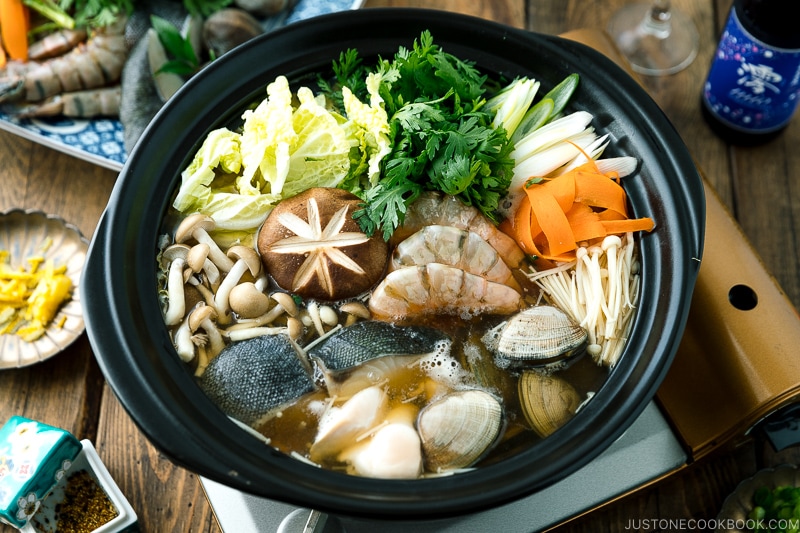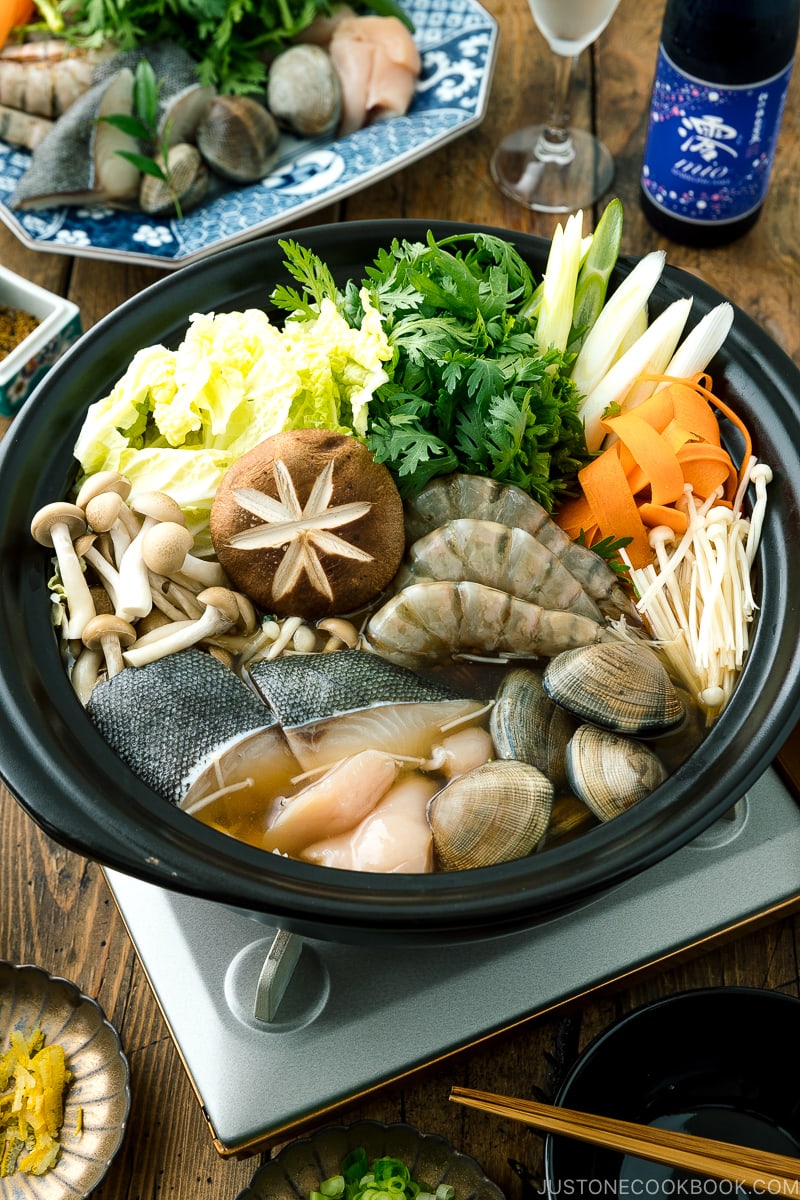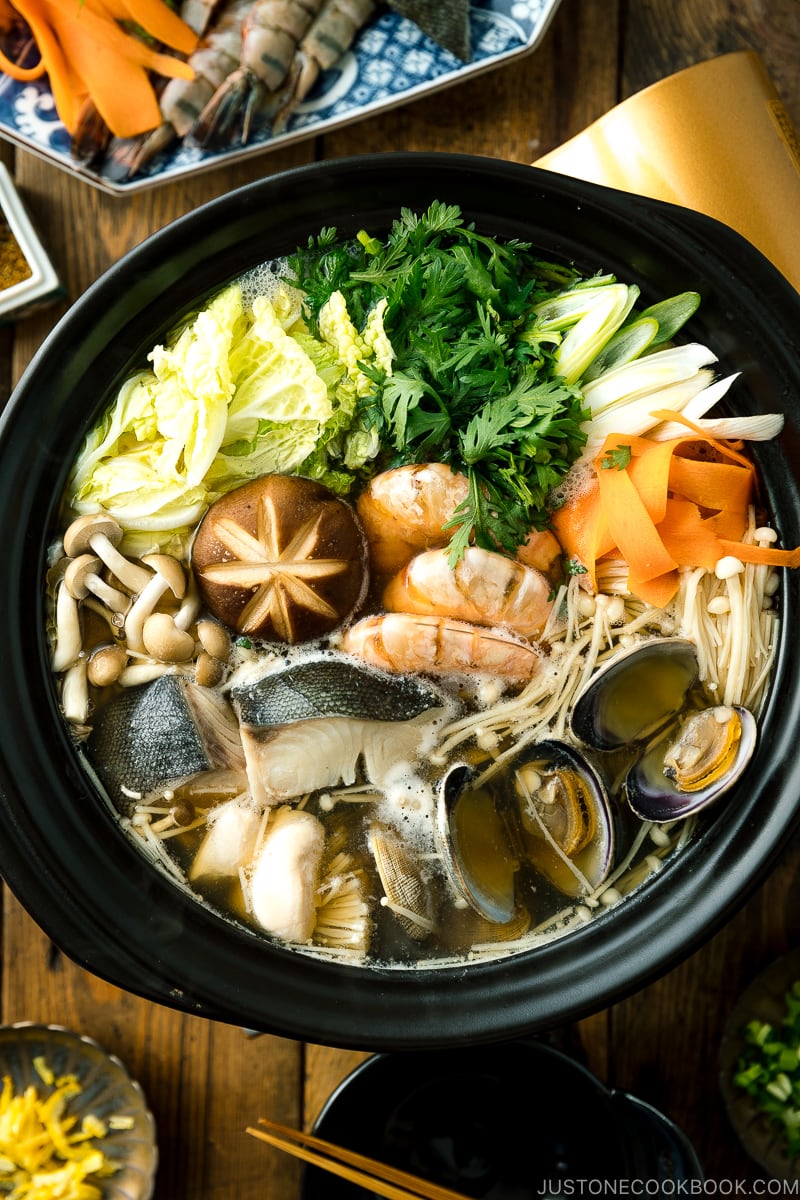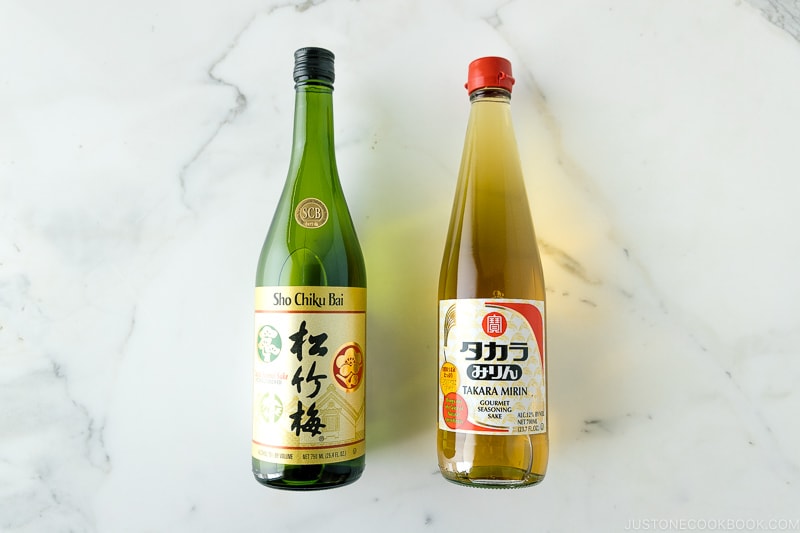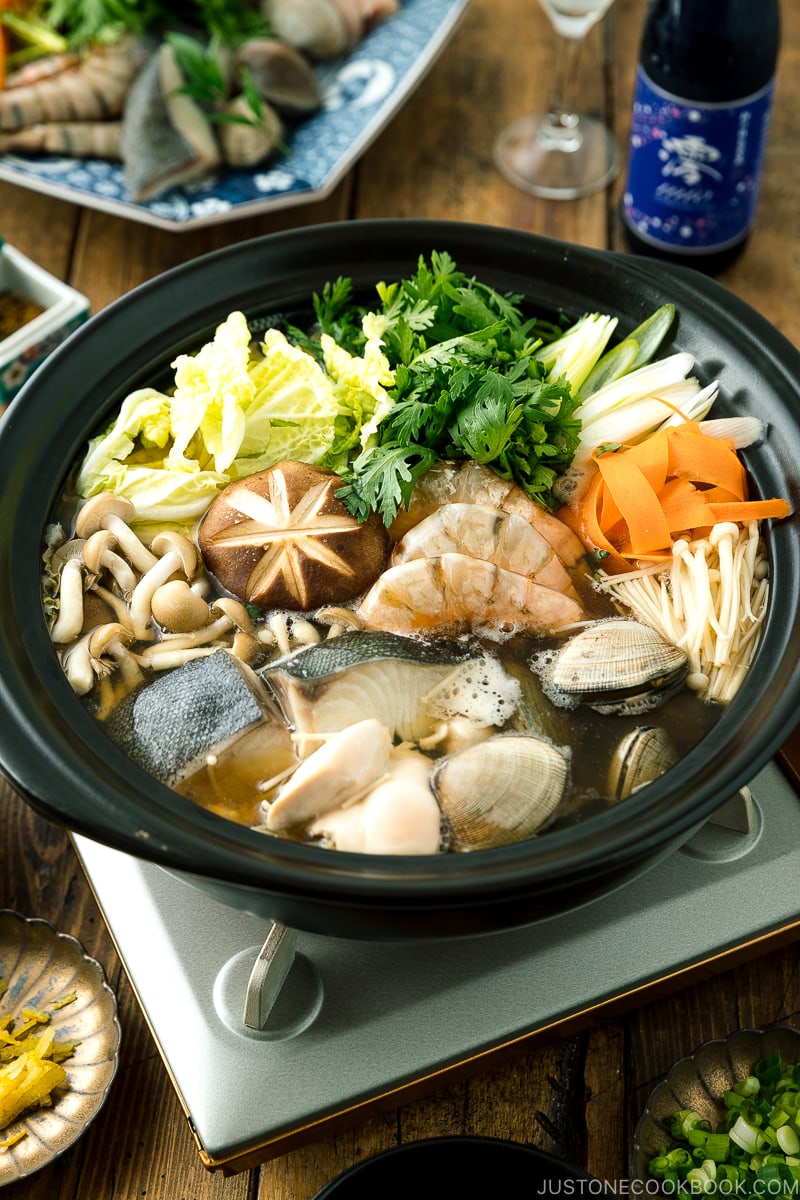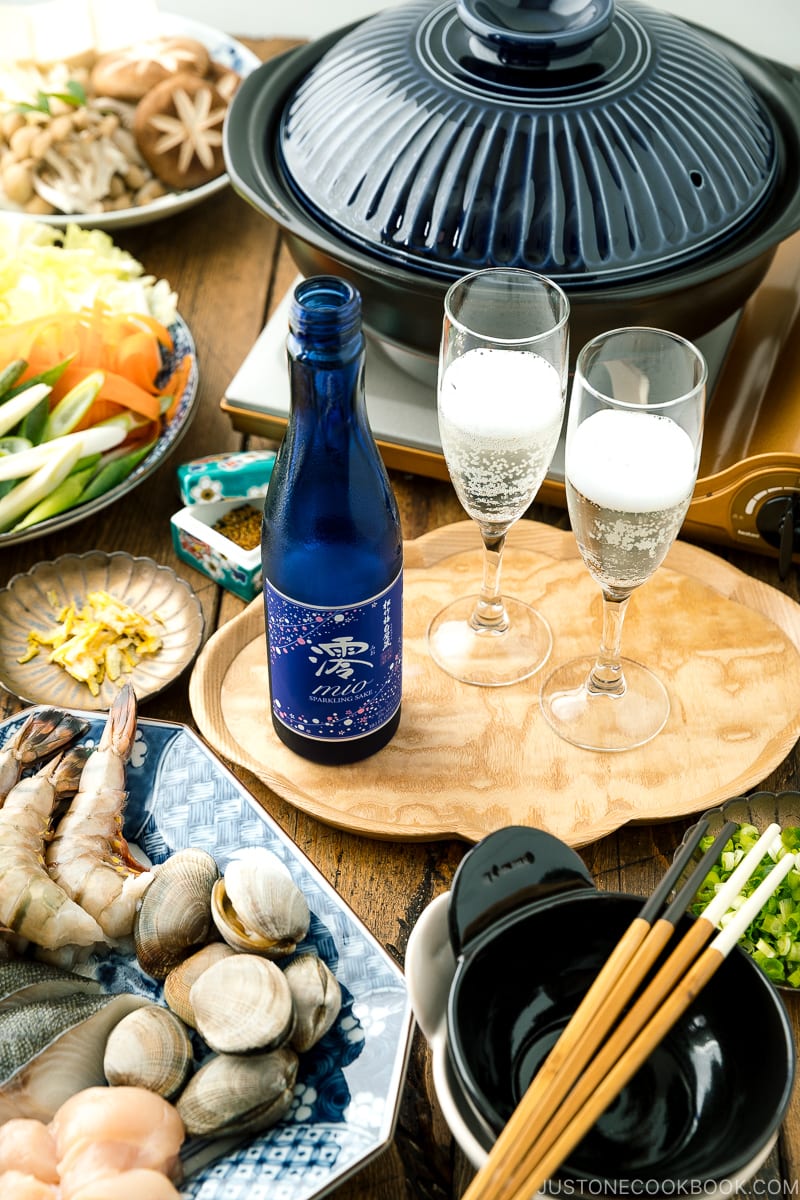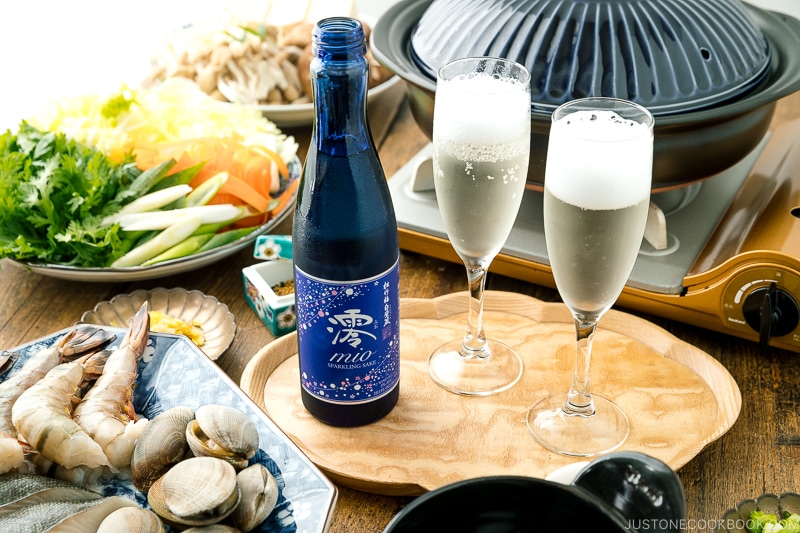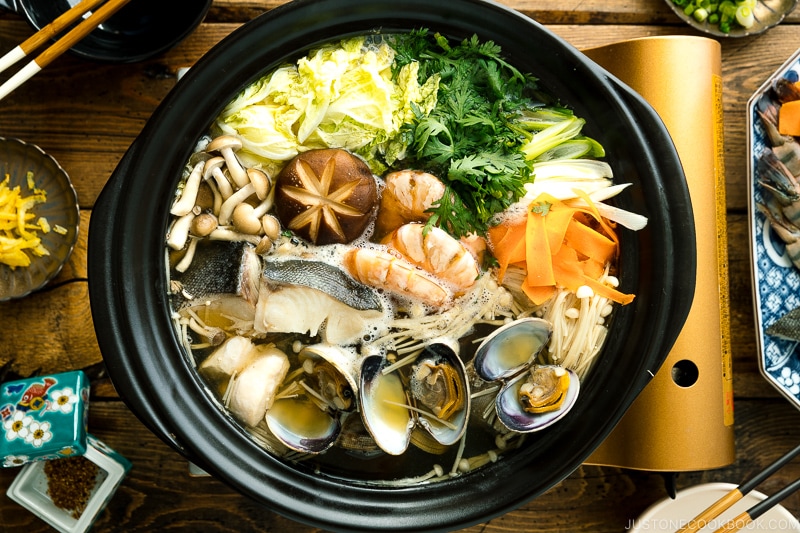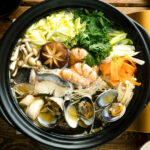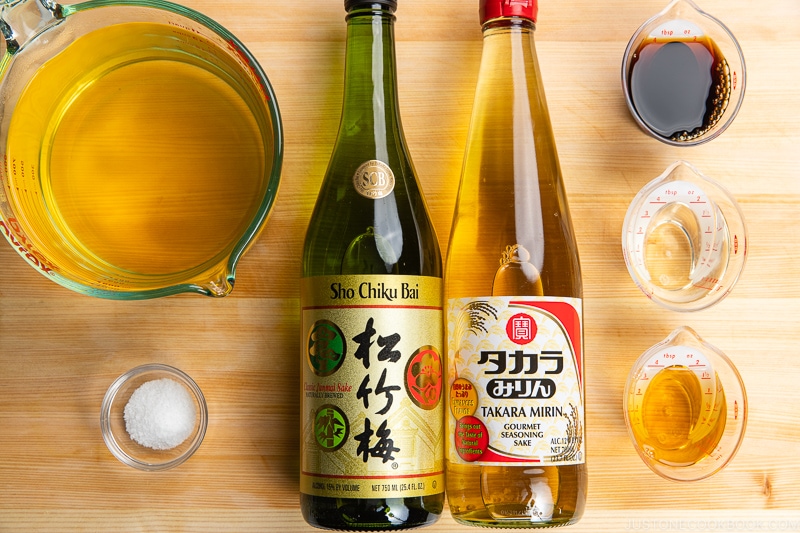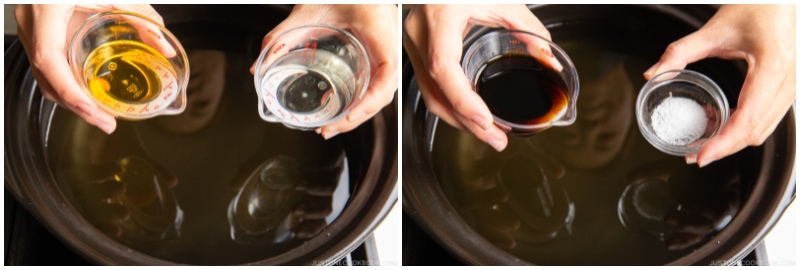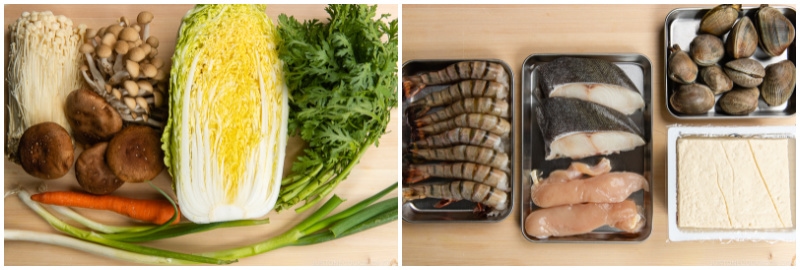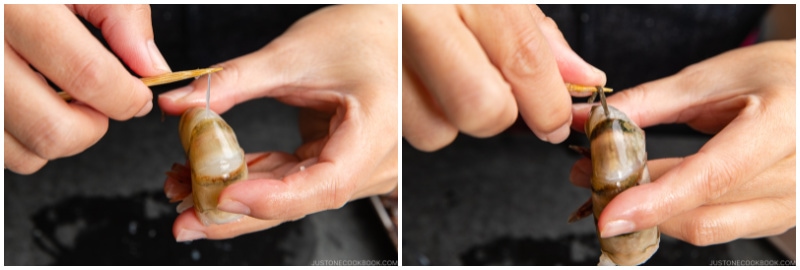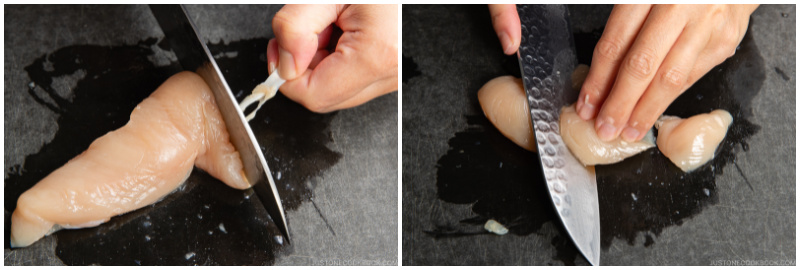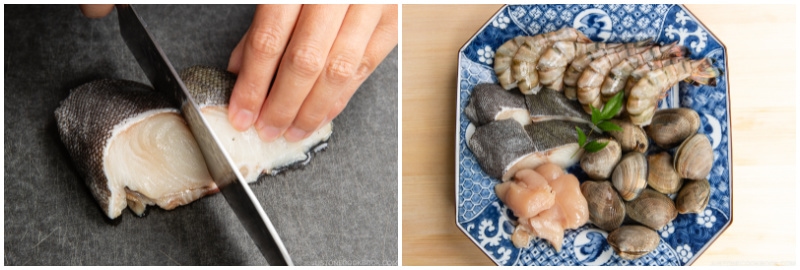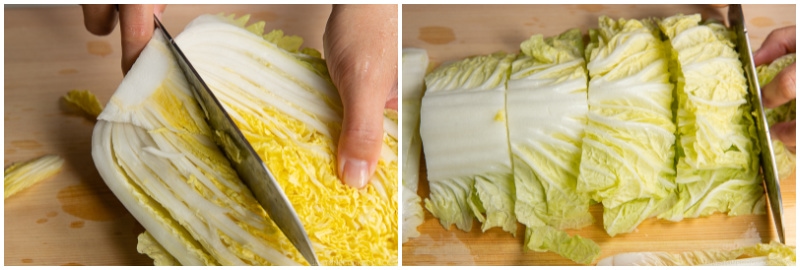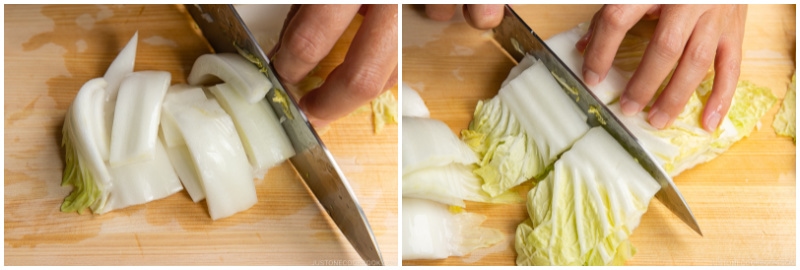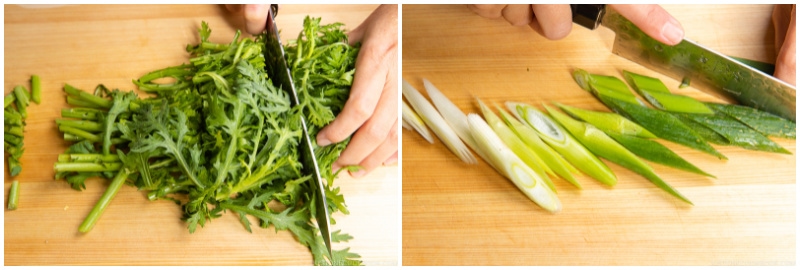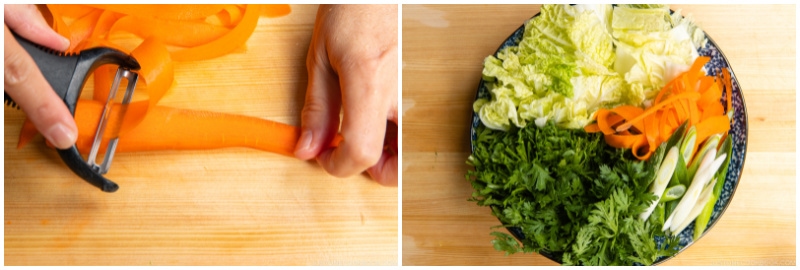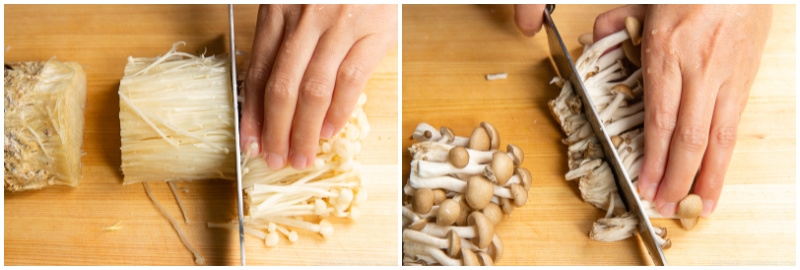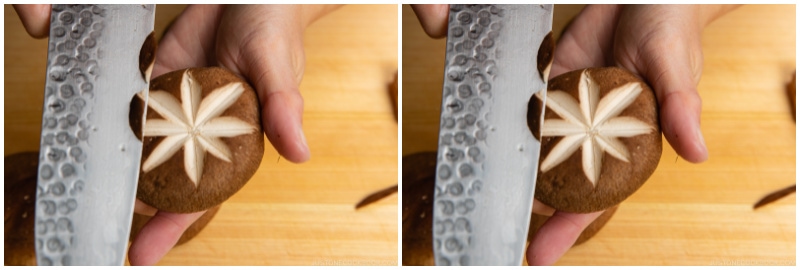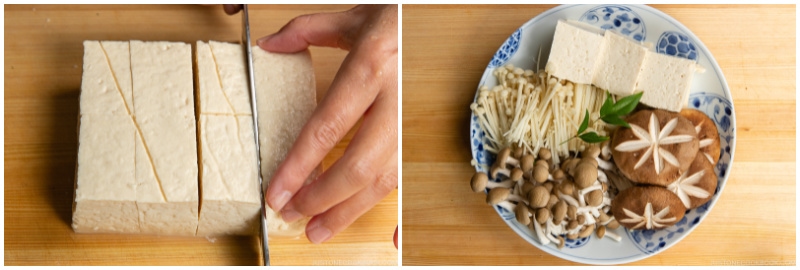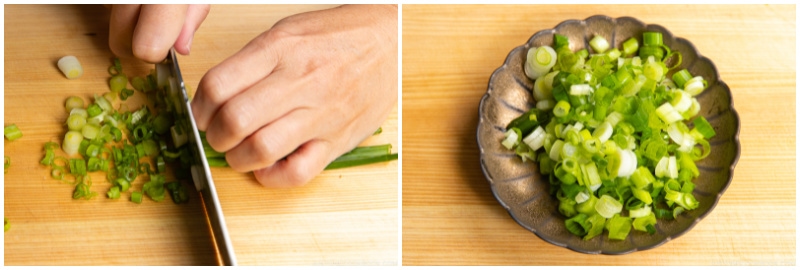Looking for a flexible hot pot recipe that can clean up leftover vegetables or meat in the freezer drawer? You’ll have to try Yosenabe (寄せ鍋) or “Anything Goes” Hot Pot! This popular Japanese hot pot is a wintertime favorite to make at home because you can literally throw in just about anything. It’s a warm, flavorful, and easy meal to boot. You can keep things simple for a weeknight dinner, but with the addition of fresh seafood, yosenabe can easily be one of the most luxurious hot pots to serve at a gathering!
What is Yosenabe?
The word yose comes from the verb yoseru (寄せる) which means to “put together.” And nabe (鍋) is the Japanese word for “pot” and is used to refer to hot pot dishes. So yosenabe is pretty much an “everything hot pot” where you have all kinds of ingredients cooked together in a simmering broth for an ultimate warm meal. I also call yosenabe a freestyle hot pot because there is no right or wrong way to make it. You start with a simple dashi broth, then add in your choice of proteins, followed by fresh vegetables and mushrooms. For yosenabe, the more the merrier. The mix of ingredients will lend plenty of flavor to the soup broth!
Ingredients for Yosenabe
Since we cook yosenabe at the table, the only things you have to prepare are:
Meat: chicken tender, but can be chicken thighs or any other meat you enjoy Seafood: sablefish, shrimp, and Manila clams, but scallops and mussels work fine too Vegetables: napa cabbage, chrysanthemum leaves, carrot, and negi Mushrooms: shiitake, shimeji, and enoki mushrooms Tofu: medium firm tofu Broth: awase dashi (kombu + katsuobushi broth) Seasonings: sake, mirin, soy sauce, and salt Garnish: green onion, yuzu zest, and shichimi togarashi
Hot Pot Cooking Tools
A large donabe (Japanese earthenware pot) – You can also use a large Dutch oven. I have different styles of donabe and for this recipe, I used Ginpo Kikka Banko Donabe Japanese Clay Pot. If you love hot pot dishes (shabu shabu, sukiyaki, kimchi nabe, etc.), it’s a great kitchen tool to have! A portable stove – I use this Iwatani butane gas stove. It is a necessary tool to enjoy all kinds of hot pots at home. Communal cooking tools – Long cooking chopsticks, slotted spoons, ladles, and a fine-mesh skimmer.
Can I Use an Electric Hot Pot?
Mirin and Sake I Recommend
To flavor the soup broth, you will need mirin and sake. Just like soy sauce, these two condiments are frequently used in Japanese recipes. It’s very important to use mirin with a higher % of alcohol, and not a mirin-like or mirin-type condiment (read more about different kinds of mirin). Sake is almost always used whenever we make seafood and meat recipes as the alcohol masks the fishy/gamey smell while imparting sweet natural umami from the fermented rice wine. I’ve been using Sho Chiku Bai Classic Junmai and Takara Mirin by Takara Sake for a long time. And I’m glad that I get to partner with the company to introduce the trusted Japanese ingredients to elevate your cooking! You can purchase Sho Chiku Bai Classic Junmai and Takara Mirin at Japanese grocery stores, Asian grocery stores, and some local supermarkets.
How To Cook Yosenabe At The Table
Step 1: Set up the table
In the center of the table, set up a portable stove for the hot pot. Make sure everyone can reach the pot; otherwise, I recommend setting up more than one stove and pot. It’s not fun when you sit too far from the hot pot action. Place the platters of ingredients around the portable stove. They should be easily accessible to everyone.
Step 2: Bring the broth to a boil
First, bring the broth to a boil. If you are cooking root vegetables such as daikon, gobo (burdock root), and carrots (if not ribbons, as I did in this recipe), start cooking them while you are heating up the broth. They take a longer time to cook.
Step 3: Fill the pot with ingredients but do not overcrowd
Once the broth is boiling, add the ingredients to the pot by arranging them in sections until the pot is filled. For example, keep the napa cabbage in one area, while the mushrooms stay in one area and the seafood stays in another. This way, it’s easy to pick up the food you want to eat. Always remember—do not overcrowd as we will cook and eat in batches. Hot pot is a process, so space out the cooking so you can enjoy the food at a leisurely pace. Close the lid and cook for 8-10 minutes. Depending on the ingredients, leafy greens will cook a lot faster than chicken, so keep an eye out for the food. During the waiting period, everyone can enjoy any appetizers or side dishes that are served alongside the hot pot.
Step 4: Serve the cooked food
It’s always a nice gesture to pick up food from the pot for people sitting next to you who may be busy chatting or eating. Ask if they are interested in being served. Enjoy the food while hot. For yosenabe, the ingredients are already cooked in a flavorful broth, so there’s no need for a dipping sauce. We sprinkle chopped green onion, yuzu zest, and/or shichimi togarashi to enjoy.
Step 5: Start a new batch
Once all the cooked food is served and cleared from the hot pot, add a new batch of ingredients. Cover the lid and start cooking for another 8-10 minutes. Add water if the broth is low in the pot. Enjoy and continue with 2-3 more rounds of cooking until you finish all the ingredients.
Sake Pairing with Mio
For yosenabe, we’ve paired it with Takara Sake’s Sho Chiku Bai Shirakabegura Mio. It is one of our favorite sake drinks to share with friends and enjoy during celebrations. If you’ve never tried sparkling sake before, we would highly recommend trying Mio as the first one. It is made from just rice and koji rice with no additives. The profile is slightly sweet, fruity, and very refreshing. Many of our friends were surprised how delicious it tastes and became instant fans. Its tiny bubbles are similar in texture to a fine champagne and contains a low 5% alcohol compared to regular sakes. The gentle characters of Mio complement yosenabe’s bold savory flavors superbly. Drinking the sparkling sake while eating hot pot brings out the unique flavors of each ingredient, and Mio ends up tasting a bit sweeter with the savory foods. The best part is the cold sparkling sake cools you down and encourage the appetite to eat more hot pot! Wish to learn more about Japanese cooking? Sign up for our free newsletter to receive cooking tips & recipe updates! And stay in touch with me on Facebook, Pinterest, YouTube, and Instagram. Editor’s Note: This post was originally published on December 3, 2021. It’s been republished on December 22, 2022.
